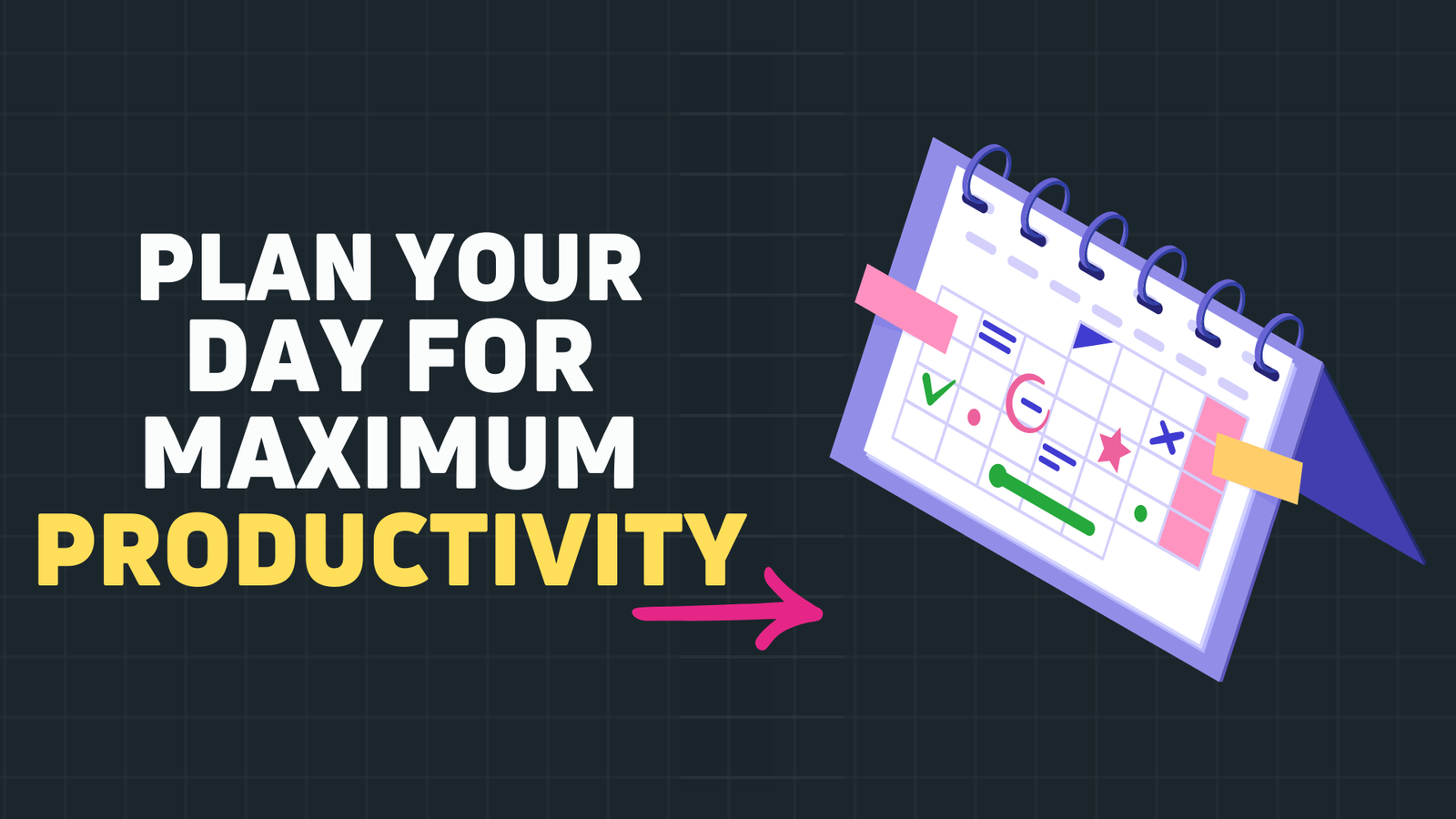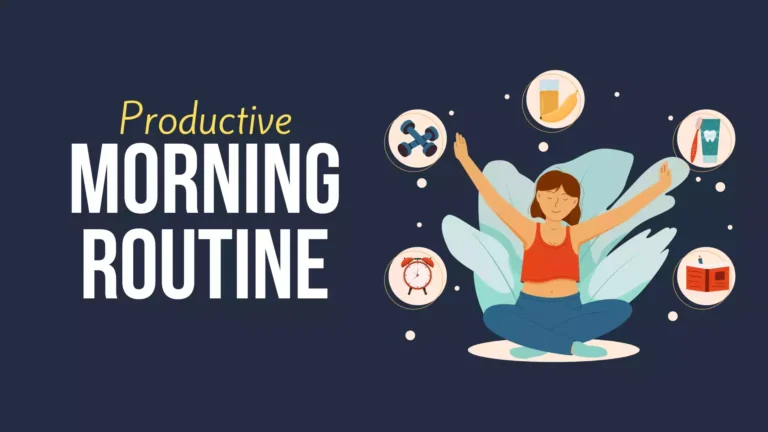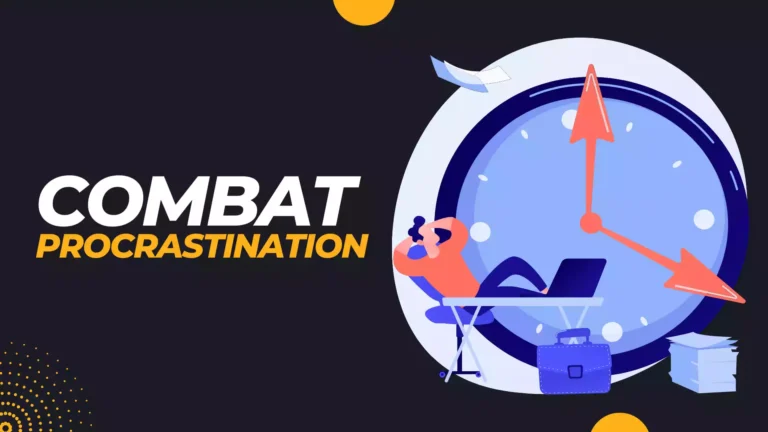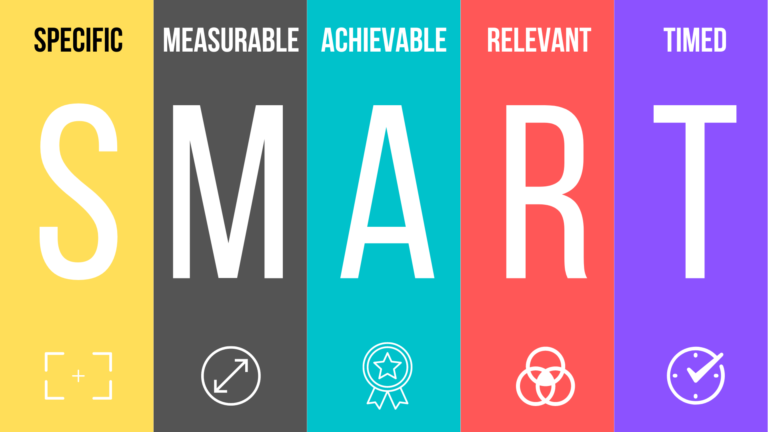In the fast-paced and ever-changing world, we live in, time is a finite and precious resource. How we choose to use it can greatly influence our success and accomplishments.
For those seeking to make the most out of every minute and achieve their goals in the shortest possible time, effective daily planning is the key. By carefully structuring each day and setting clear priorities, we can unlock the true potential of our productivity.
In this article, we will explore the art of planning for maximum productivity, uncovering the strategies and techniques that can transform your daily routine. From setting meaningful goals to organizing tasks with specific time slots, we’ll delve into the science behind productive planning. Whether you’re a seasoned planner looking to enhance your techniques or someone new to the concept, this guide will equip you with the tools to make every moment count.
So let’s embark on this journey to unlock your productivity potential and set yourself up for remarkable achievements.
Table of Contents
Start with Clear Goals
Setting clear and meaningful goals is the foundation of effective daily planning. Without a destination in mind, it’s challenging to chart a course and make intentional decisions. Goals serve as our guiding stars, directing our actions and efforts toward specific outcomes.
Begin by asking yourself, “What do I want to achieve?” Whether it’s advancing in your career, launching a successful blog, starting a business, or improving your personal life, defining your goals provides clarity and purpose.
Once you have identified your goals, take the time to break them down into manageable steps. Create actionable plans with measurable milestones that will lead you toward your ultimate objectives. This step-by-step approach will not only make your goals more achievable but also provide you with a clear roadmap to follow.
Remember, your goals should be specific, measurable, achievable, relevant, and time-bound (SMART). Having SMART goals ensures that they are well-defined and can be realistically attained within a set timeframe.
Categorize Tasks: Goal-Focused vs. Everything Else
With clear goals in place, you now have a sense of direction and purpose. However, not all tasks contribute equally to achieving those goals. To ensure maximum productivity, it’s essential to differentiate between “goal-focused tasks” and “everything else.”
Goal-focused tasks are the activities that directly align with your defined objectives. These tasks move you closer to your desired outcomes and represent the core priorities in your daily planning. They might include working on your blog content, developing marketing strategies, or networking to build connections in your industry.
On the other hand, “everything else” encompasses tasks that are necessary but may not directly contribute to your goals. These activities can range from checking emails and responding to social media messages to handling administrative duties and personal errands.
The challenge arises when “everything else” takes precedence over your goal-focused tasks. It’s common to feel drawn to these less critical activities as they might seem urgent, easy to complete, or even more enjoyable in the moment. However, allowing these tasks to dominate your day can hinder progress on your most important endeavors.
Begin the Day with Goal-Focused Tasks
To maximize your productivity, it’s crucial to adopt a proactive approach to daily planning. Rather than allowing external demands and distractions to dictate your schedule, start your day by focusing on your goal-oriented tasks.
Imagine your daily tasks as a jar filled with rocks and sand. The rocks represent your goal-focused tasks, while the sand symbolizes the “everything else” activities. If you fill the jar with sand first, there won’t be enough space for the rocks. However, if you prioritize the rocks and then fill in the remaining space with sand, everything fits harmoniously.
Likewise, by starting your day with goal-focused tasks, you create a strong foundation for productivity. These tasks are typically more impactful and significant in achieving your objectives. Completing them early sets a positive tone for the rest of the day, empowering you to handle other tasks efficiently.
Avoid the common trap of diving into email responses or social media browsing right after waking up. These activities can easily consume precious hours, leaving little time for your essential work. Instead, commit to dedicating the first hours of your day to goal-focused tasks.
By allocating this dedicated time, you’ll experience a sense of accomplishment and progress, which can boost motivation and overall productivity throughout the day. Moreover, you’ll be less likely to be sidetracked by less critical activities that can impede your goal attainment.
Give Each Task a Specific Time Slot
While beginning your day with goal-focused tasks is crucial, it’s equally important to allocate specific and realistic time slots for each activity on your daily plan. Without clear timeframes, tasks can easily expand to fill the available time, resulting in inefficiency and reduced productivity.
Giving each task a designated time slot provides structure and accountability to your daily schedule. By setting boundaries and mini-deadlines, you create a sense of urgency and focus that can significantly enhance your productivity.
To implement this strategy effectively, consider the following steps:
- Prioritize Your Tasks: Arrange your tasks in order of importance and urgency. Place goal-focused tasks at the top of the list, followed by other essential activities.
- Estimate Time Requirements: Assess how much time each task is likely to take. Be realistic in your estimates, considering factors like complexity, distractions, and unexpected challenges.
- Allocate Time Slots: Assign specific time slots to each task based on your estimates. Ensure that you have sufficient time to complete the essential activities without feeling rushed.
- Stick to the Schedule: Once your plan is in place, commit to following it diligently. Avoid deviating from the schedule unless absolutely necessary.
By following this methodical approach, you create a clear roadmap for your day, increasing your focus and productivity. The power of specific time slots lies in their ability to create a sense of urgency, prompting you to work more efficiently and stay on track.
Embrace Mono-Tasking
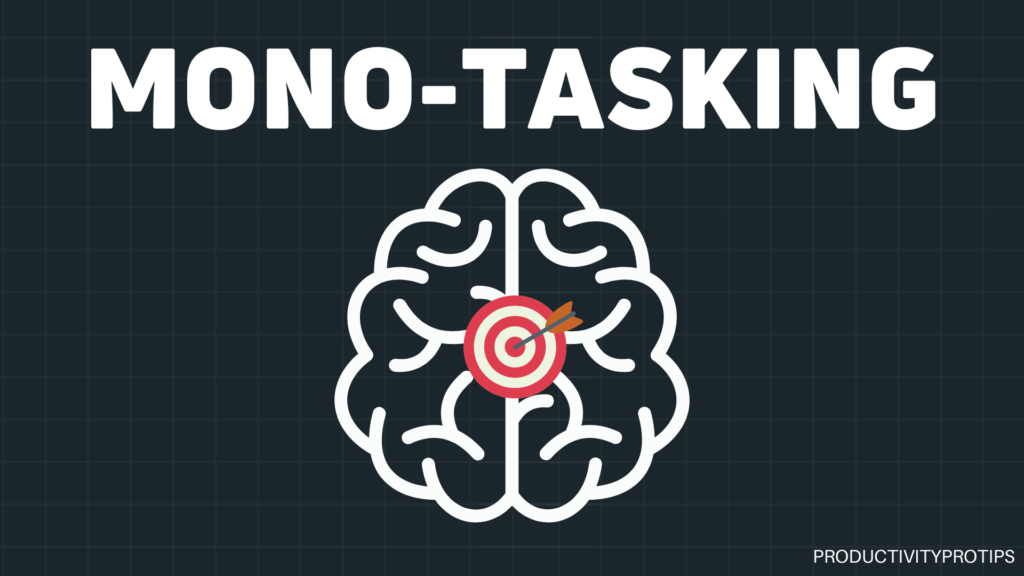
In a world filled with constant distractions and multitasking temptations, staying focused on a single task can be challenging. However, the ability to mono-task—giving undivided attention to one task at a time—is a powerful skill that significantly enhances productivity.
When you engage in multitasking or allow distractions to interrupt your work, you divide your attention, resulting in reduced efficiency and quality of output. Studies have shown that the human brain is not designed for true multitasking; rather, it switches rapidly between tasks, leading to cognitive overload and decreased performance.
To fully embrace mono-tasking, create a work environment that minimizes distractions. Silence notifications on your devices, close unnecessary tabs, and set specific periods for focused work. Consider implementing the Pomodoro Technique, where you work on a task for 25 minutes and then take a short break before starting the next session.
Mono-tasking allows you to immerse yourself fully in a task, leading to improved concentration and quicker completion. By eliminating distractions, you can maintain a state of flow and achieve higher levels of productivity.
I recommend you to Read this article “Why multitasking is a myth: How to focus on one task at a time“.
Write Your Daily To-Do List the Night Before!
Daily planning is a vital aspect of maximizing productivity, but it’s essential to strike a balance between effective planning and procrastination. One common pitfall is spending too much time planning, using it as a way to avoid getting started on the actual work. This phenomenon, known as “procrasti-planning,” can hinder your productivity goals.
To overcome procrasti-planning and set yourself up for success, consider writing your daily to-do list the night before. This practice offers several key advantages:
- Clarity and Focus: Planning ahead enables you to start the day with a clear direction, knowing exactly which tasks need to be accomplished.
- Strategic Task Selection: With a rested mind, you can make thoughtful decisions about which tasks align with your goals and priorities, avoiding distractions or tasks that only provide temporary satisfaction.
- Stress Reduction: Organizing your tasks in advance allows you to unwind and enjoy your evening without worrying about work-related matters.
Writing your to-do list the night before ensures that your daily plan is well-considered and aligned with your larger objectives. It sets the stage for a smooth start to the day, allowing you to dive into meaningful work immediately.
Conclusion
Maximizing productivity through effective daily planning requires setting clear goals, prioritizing goal-focused tasks over everything else, starting the day with these tasks, allocating specific time slots, and embracing mono-tasking. Writing your to-do list the night before avoids procrasti-planning.
Sticking to the plan with discipline and focus leads to consistent progress and achievement. By implementing these strategies, you can work smarter, achieve more, and turn your aspirations into reality. Take control of your time and embrace the power of proactive planning for a fulfilling and productive life.
